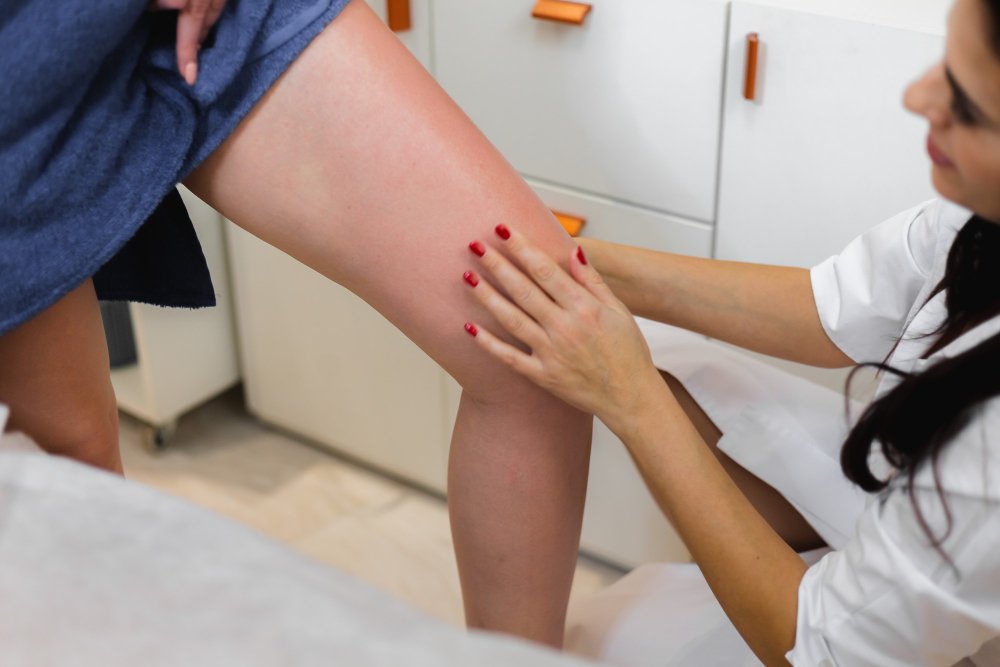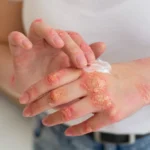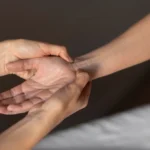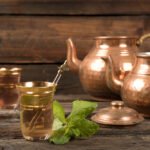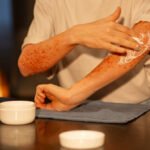Filariasis is a group of neglected tropical diseases caused by thread-like nematodes transmitted to humans through insect vectors. In chronic conditions, it can lead to elephantiasis, a condition marked by severe swelling, thickening, and hardening of the skin and underlying tissues, especially in the legs and genitals.
In this blog, let’s explore how Ayurvedic treatment for filariasis and elephantiasis provides long-term relief using natural therapies, herbal formulations, and Panchakarma detoxification.
Understanding Filariasis and Elephantiasis
What is Filariasis?
Filariasis refers to a group of parasitic infections caused by thread-like nematodes (roundworms) transmitted to humans through the bites of infected insect vectors such as mosquitoes, blackflies, and deerflies. Among the various types, lymphatic filariasis is the most common and widespread form, caused by Wuchereria bancrofti, Brugia malayi, and Brugia timori.
When these parasites enter the human body, they settle in the lymphatic system. Over time, the worms cause inflammation, obstruction, and damage to the lymphatic vessels. The infection may remain asymptomatic for years, silently impairing lymphatic circulation, kidney function, and immunity. As the disease progresses, chronic infection leads to lymphedema (swelling), elephantiasis (thickened, enlarged skin and limbs), and hydrocele (scrotal swelling in men).
Globally, filariasis is recognized by the World Health Organization as a leading cause of permanent disability. Despite its disabling nature, it is preventable and potentially eliminable through consistent vector control and preventive chemotherapy.
What is Elephantiasis?
Elephantiasis is the advanced, chronic stage of lymphatic filariasis. It causes extreme enlargement and thickening of limbs, breasts, or genitals due to lymphatic blockage. The skin becomes rough and thick, resembling that of an elephant.
Common Symptoms
Filariasis often develops gradually, and in many cases, the infection can remain asymptomatic for years. About two-thirds of those infected show no visible symptoms, yet they can still transmit the disease to others through mosquito bites. However, when symptoms do appear, they can range from acute inflammation to chronic swelling and deformity, depending on the duration and severity of infection.
Early and Asymptomatic Stage
- No visible symptoms, but internal damage to the lymphatic system may begin.
- Weakened immunity, making the body more vulnerable to infections.
- The person remains a carrier, contributing to the spread of the parasite.
Acute Manifestations
- Fever and localized inflammation of the lymph nodes and lymph vessels, often due to immune reaction or secondary bacterial infections.
- Pain and tenderness in affected areas such as arms, legs, or groin.
- Recurrent episodes of skin redness, swelling, and warmth lasting several days or weeks.
- Fatigue and malaise due to ongoing inflammation and toxin buildup.
Chronic Manifestations
When the infection becomes chronic, the lymphatic flow gets obstructed, resulting in persistent swelling and thickening of tissues. Common chronic symptoms include:
- Lymphedema: Progressive swelling of limbs, breasts, or genitalia due to fluid accumulation.
- Elephantiasis: Characterized by severe, permanent thickening, hardening, and darkening of the skin and underlying tissues.
- Hydrocele: Painful swelling of the scrotum in men caused by lymphatic blockage.
- Edema: Generalized fluid retention leading to puffiness and discomfort in various body parts.
- Skin changes: Hardening, rough texture, or darkening of affected areas.
- Respiratory symptoms: Persistent cough, wheezing, or shortness of breath in some cases.
- Recurrent bacterial infections: Chronic swelling reduces lymphatic function, allowing bacteria to thrive, leading to frequent infections and ulcers.
Beyond physical discomfort, filariasis can lead to social stigma, emotional distress, and economic hardship. The visible disfigurement and limited mobility often cause loss of income, isolation, and mental health issues, significantly affecting quality of life.
Elephantiasis can affect various parts of the body, including:
- Arms
- Legs
- Breasts
- Scrotum
- Penis
- Vulva
- Face
Causes and Risk Factors
Causes
Filariasis is caused by filarial worms that get transmitted by mosquito bites. The three main species responsible for lymphatic filariasis are:
- Wuchereria bancrofti
- Brugia malayi
- Brugia timori
Risk Factors:
- Living in tropical and subtropical regions, where mosquito populations thrive, especially in parts of Africa, India, Southeast Asia, and South America.
- Prolonged exposure to mosquito bites, particularly at night when transmission-carrying mosquitoes (like Culex, Anopheles, and Aedes) are most active.
- Poor sanitation and stagnant water, which encourage mosquito breeding.
- Living in overcrowded or rural areas with limited mosquito control and healthcare access.
- Long-term residence in endemic areas, increasing cumulative risk of infection.
Read more: Ayurvedic Treatment for Anxiety
Ayurvedic Perspective on Filariasis and Elephantiasis
In Ayurveda, filariasis is closely correlated with “Shleepada,” a condition described as “elephant leg,” derived from the words “Shlee” (elephant) and “Pada” (leg or foot). This disorder is classified under Krimi Roga and primarily affects the Rohini, the sixth layer of the skin. Classical Ayurvedic texts describe that Shleepada arises in regions associated with stagnant or old water (Puranodaka) and cold climatic conditions (Sarva Ritu Sheetala), which disturb the balance of all three doshas.
The vitiated doshas accumulate in the lower limbs, starting from the groin (Vankshana), thigh (Uru), knee (Janu), and calves (Janga) and eventually reaching the foot. This leads to Shopha (swelling), Arati (pain), and Jwara (fever), causing the affected area to become hard and enlarged, resembling the leg of an elephant.
Shleepada is considered a Kapha-predominant disorder, characterized by heaviness, stiffness, and gradual swelling of the limbs. The condition is aggravated by factors such as residing in wetlands (Anupadesha), cold climate (Sheeta Kala), consumption of contaminated water (Dusta Jala), and Kapha-increasing foods like fish (Matsya) and curd (Dadhi).
These causative factors disturb the digestive fire (Agni), leading to toxin formation (Ama) and obstruction of vital channels (Srotas), particularly those carrying Rasa, Rakta, Mamsa, and Meda dhatus. Over time, this results in inflammation, swelling, and pain in the lower limbs. Ayurveda categorizes the disease into three types, such as Vataja, Pittaja, and Kaphaja Shleepada, based on the predominant dosha involved, each exhibiting unique symptoms and severity.
Read more: Benefits of Drinking Water in a Copper Vessel
Effective Ayurvedic Treatments for Filariasis
Classical Ayurvedic texts describe a wide range of internal and external therapies for Shleepada, aimed at cleansing the body, balancing doshas, and restoring normal lymphatic function. The treatment approach combines Shodhana Chikitsa (purification therapies) and Shamana Chikitsa (palliative care) to address both the root cause and the symptoms of the disease.
Panchakarma and Shodhana Therapies
- Raktamokshana (Bloodletting): As described by Acharya Sushruta, bloodletting is performed at specific sites depending on the dominant dosha—four finger-breadths above the ankle in Vataja Shleepada, below the ankle joint (Gulphasandhi) in Pittaja Shleepada, and at the prominent vein of the big toe in Kaphaja Shleepada. This procedure helps relieve congestion, reduce inflammation, and restore lymphatic flow.
- Siravedhana (Venesection): Mentioned by Acharya Charaka, venesection is performed on the affected limb to remove vitiated blood and toxins, thereby alleviating swelling and stiffness.
- Langhana (Therapeutic Fasting): Used to improve digestion and reduce Kapha accumulation, fasting helps stimulate Agni (digestive fire) and remove Ama (toxins).
- Swedana (Fomentation Therapy): Herbal steam or heat therapy helps open up obstructed srotas (channels), promotes circulation, and reduces swelling.
- Virechana (Purgation): This therapy eliminates excess Pitta and Kapha doshas from the body, supporting internal detoxification.
- Ushna Upachara (Heat Therapy): Warm oil treatments and fomentation procedures are applied to relieve stiffness and reduce Kapha-related heaviness in the limbs.
Internal Medications and Herbal Formulations
Ayurveda recommends several Kashayams (decoctions), Choornas (powders), Tailas (medicated oils), Ghritas (ghee preparations), and Rasas for effective management of Shleepada:
Kashayams (Herbal Decoctions):
- Noonganadhi Kashayam
- Guggulu Tiktaka Kashayam
- Bharngyadi Kashayam
- Shakhotaka Kashayam mixed with Gomutra (cow’s urine)
Choornas (Herbal Powders):
- Rajani Churna (Turmeric powder)
- Vridha Daruka Churna
- Pippalyadi Churna
- Sudarshana Churna
Tailas (Medicated Oils):
- Noongandhai Eranda Tailam
- Panchanan Tailam
- Vidangadi Tailam
Ghritas (Medicated Ghee Preparations):
- Panchanan Ghrita
- Saureswara Ghrita
- Vridha Daruka Ghrita
Compound Formulations:
- Nityanandha Rasa
- Sleepadari Loha
- Shakhotaka Vati
- Guda Haritaki
Disclaimer: Always consult an Ayurvedic practitioner before consuming Ayurvedic formulations.
Diet and Lifestyle Modifications
- Eat light, warm, easily digestible foods
- Avoid curd, fried, and heavy foods that aggravate Kapha
- Include turmeric, ginger, and garlic in your diet
- Practice gentle yoga and limb elevation to aid lymph drainage
- Maintain good hygiene and avoid mosquito bites
Read more: Ayurvedic Treatment for Insomnia
Benefits of Ayurvedic Treatment for Filariasis
At Back to Roots Ayurveda, the treatment for filariasis focuses on balancing doshas, detoxifying the lymphatic system, and strengthening immunity through time-tested Ayurvedic therapies. The key benefits:
- Natural detoxification and lymphatic cleansing through Ayurveda treatments in Kerala
- Reduced swelling, inflammation, and pain
- Strengthened immunity and improved circulation
- Long-term relief without side effects
- Personalized and holistic care
Why Choose Kerala for Ayurvedic Treatment?
Kerala is renowned as the home of authentic Ayurveda. The state’s ideal climate, fresh medicinal herbs, and traditional healing practices make it a global hub for Ayurvedic therapies.
Choosing an Ayurvedic retreat in Kerala allows patients to receive personalized care from experienced physicians and benefit from time-tested therapies in a serene, healing environment.
For comprehensive treatments, visit Back to Roots Ayurveda and explore our holistic wellness programs.
FAQs
1. Can filariasis be cured permanently in Ayurveda?
Ayurvedic treatment for filariasis aims for long-term relief by detoxifying the lymphatic system, balancing doshas, and strengthening immunity. Early-stage cases respond faster, while chronic cases may need consistent therapy and follow-up care.
2. Which Ayurvedic herbs are best for treating elephantiasis?
Herbs such as Punarnava, Neem, Guggulu, Kanchanara, Vidanga, and Turmeric are effective in reducing inflammation and promoting lymphatic drainage.
3. How long does Ayurvedic treatment for filariasis take?
Depending on severity, Ayurvedic treatment for filariasis may last from a few weeks to several months, combining internal medicines and external Panchakarma therapies.
4. Is Panchakarma necessary for filaria treatment?
Yes, Panchakarma is crucial for eliminating deep-seated toxins and improving lymphatic circulation, especially in chronic elephantiasis cases.
5. Can Ayurveda help reduce swelling caused by filariasis?
Absolutely. Herbal decoctions, massages, and diet correction in Ayurveda effectively reduce swelling, pain, and lymphatic congestion.

